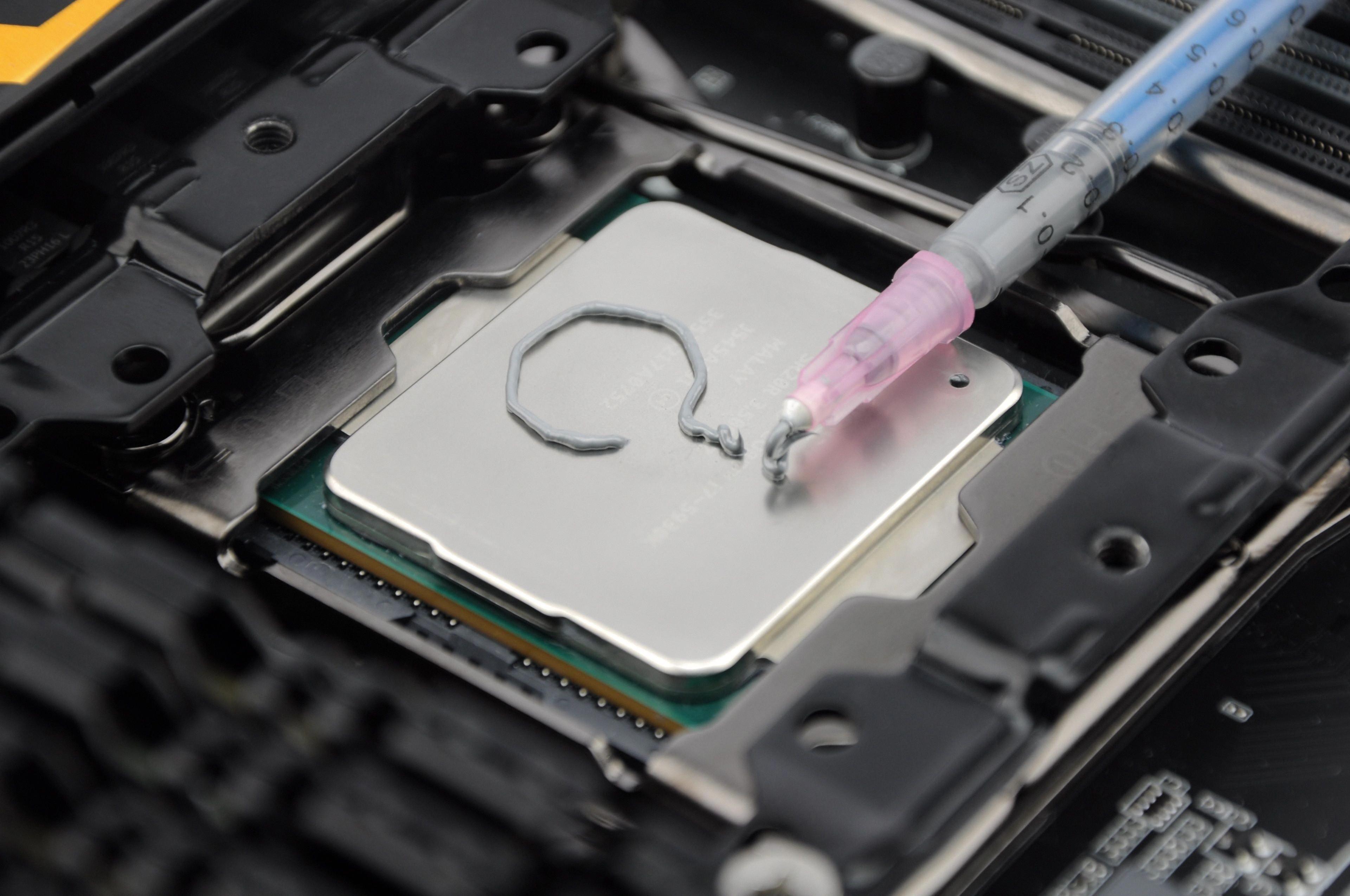CPU thermal paste is an essential component in any computer system. Its role is vital in keeping the CPU cool and preventing it from overheating. The CPU is one of the most critical components in a computer system, and it is responsible for processing data and running applications. As a result, it generates a lot of heat, which can damage the system if not adequately dissipated. The thermal paste helps in transferring heat from the CPU to the heat sink, which then expels it away from the hardware.
There are different types of thermal paste available in the market, but they all serve the same purpose. The most common types are silicone-based, metal-based, and ceramic-based thermal pastes. Each type has its own advantages and disadvantages, and choosing the right one depends on the user’s preferences and the computer system’s requirements.
Silicone-based thermal pastes are the most commonly used type of thermal paste. They are affordable and easy to apply. They are also non-corrosive, which means they won’t damage the CPU or heat sink. However, they are not as effective as other types of thermal paste, and they may require frequent reapplication.
Metal-based thermal pastes are more effective than silicone-based thermal pastes. They contain tiny metal particles that help in conducting heat away from the CPU. They are also more durable than silicone-based thermal pastes and require less frequent reapplication. However, they are more expensive than silicone-based thermal pastes and may corrode the CPU or heat sink if left for an extended period.
Ceramic-based thermal pastes are the most effective type of thermal paste. They contain ceramic particles that help in conducting heat away from the CPU. They are also non-corrosive and require less frequent reapplication. However, they are the most expensive type of thermal paste and may be challenging to apply.
When applying thermal paste, it is essential to use the right amount. Applying too much thermal paste can actually reduce its effectiveness and cause the CPU to overheat. The recommended amount is a small, pea-sized drop in the center of the CPU. The heat sink will spread the thermal paste evenly as it is screwed in place.
CPU thermal paste is a crucial component in any computer system. It helps in transferring heat from the CPU to the heat sink, which then expels it away from the hardware. Choosing the right type of thermal paste depends on the user’s preferences and the computer system’s requirements. When applying thermal paste, it is essential to use the right amount to ensure maximum effectiveness.
The Necessity of Thermal Paste for CPUs
Thermal paste is necessary for CPUs. This is because it helps to transfer heat from the CPU to the cooler or heat sink. Without thermal paste, there would be air gaps between the CPU and cooler, which can cause overheating and damage to the CPU. The thermal paste fills these gaps and allows for better heat transfer, which helps to keep the CPU cool and functioning properly. It is important to note that not all CPU coolers come with pre-applied thermal paste, so it is important to check before installation. Additionally, it is recommended to periodically replace the thermal paste to ensure optimal performance and temperature regulation.

The lifespan of Thermal Paste on a CPU
Thermal paste is a compound that is used to fill the microscopic gaps between the CPU’s heat spreader and the CPU cooler. Its primary function is to improve the transfer of heat from the CPU to the cooler, thus reducing the CPU’s operating temperature. However, the effectiveness of thermal paste degrades with time due to factors such as thermal cycling, oxidation, and evaporation.
The lifespan of thermal paste varies depending on several factors such as the quality of the paste, the operating temperature of the CPU, and the usage pattern of the system. High-quality thermal paste can maintain its efficacy for up to 7 years after installation. However, it is recommended to remove and replace thermal paste every 2-3 years to ensure optimal thermal performance.
If the thermal paste is not replaced regularly, it can lead to increased CPU temperatures, which can result in reduced performance, system instability, and even hardware failure. Therefore, it is crucial to monitor the CPU temperature regularly and replace the thermal paste as needed.
The Purpose of CPU Thermal Paste
CPU thermal paste, also known as thermal compound or thermal interface material (TIM), is a type of compound that is applied to the top of a CPU (Central Processing Unit) to help transfer heat away from the CPU and into the heat sink. The heat sink is a device that is attached to the top of the CPU and helps to dissipate the heat generated by the CPU. The thermal paste fills the microscopic gaps between the CPU and the heat sink, allowing for better heat transfer between the two components. It is a crucial component in maintaining the health and longevity of the CPU, as overheating can cause damage to the hardware. Without thermal paste, the heat generated by the CPU would not be effectively dissipated, leading to overheating and potential damage to the hardware. Therefore, it is recommended to apply thermal paste whenever installing or replacing a CPU or heat sink.
How Much Thermal Paste is Needed for CPU Installation?
When it comes to applying the thermal paste on your CPU, it is important to use the right amount. In general, you only need a pea-sized drop of thermal paste on your CPU. Using too much thermal paste can actually be counterproductive as it can cause the paste to overflow and get onto other components of your computer, potentially causing damage.
It is also important to note that spreading the thermal paste around is not recommended. This is because the heatsink will naturally spread the paste out evenly as it is screwed in. If you spread the paste around, there is a risk of air bubbles forming, which can negatively impact the efficiency of the thermal paste.
To summarize, when applying thermal paste, only use a small, pea-sized drop and allow the heatsink to spread it out evenly. This will ensure optimal performance and prevent any potential damage to your computer.
Conclusion
CPU thermal paste plays a crucial role in keeping your hardware cool and functioning optimally. It helps transfer heat away from the CPU and into the heat sink, which expels the heat away from the hardware. Although many CPU coolers come with pre-applied paste, it’s important to check and ensure that it’s still effective. Manufacturers recommend replacing the thermal paste every 2-3 years to maintain optimal thermal performance. When applying thermal paste, less is more, and a small, pea-sized drop is all you need. By following these guidelines, you can ensure that your CPU stays cool and functions at its best for years to come.








